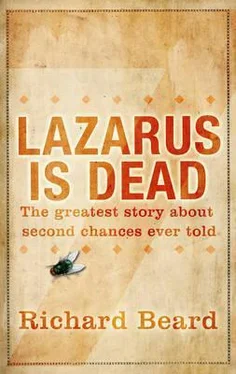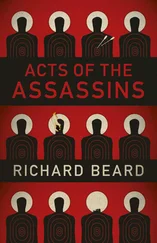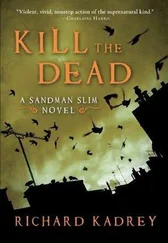Jesus collapses at the base of the pillar, and slides in his own fresh blood. This is no place for the son of god, or for not the son of god.
The soldiers reach down for him. He is below them, in the pit of a personal hell. Jesus has started to die.
‘Lazarus, wake up!’
Mary is shaking him by the shoulder. Friday morning has dawned and he shades his eyes with his hand.
‘What? What is it?’
Mary tells him everything she knows. The trial in the house of Caiaphas, the transfer to the Praetorium, the Romans, the death sentence.
‘No,’ Cassius says. He too is blinking sleep from his eyes. ‘This is wrong. I did not recommend this.’
‘We came here to save him,’ Lazarus says. He recognises instantly that his task of great importance has arrived.
‘Wait,’ Martha says. ‘Stay here. We don’t have all the facts.’
For Martha there is always danger, and Lazarus has heard and ignored her from his earliest childhood. Everything is dangerous because of death. If it weren’t for death, nothing would be frightening, or not unbearably so. Don’t go there, because you might die there. Don’t do that because you might die doing it. As if he can stay where he is and do nothing and never die.
‘You’re too late,’ Cassius says. ‘Resurrection was a step too far. Bread and loaves, yes. Walking on water, maybe. When he brought you back to life that was the blasphemy. Nobody wants to believe it, not your priests, not my superiors.’
‘So we’ll deny the resurrection,’ Lazarus says. ‘We’ll buy him some time.’
Lazarus will swear on his mother’s life they’d been planning it together for years, a plot between friends with each of them fully prepared. But that isn’t true. Poc. The truth flickers and threatens to light up. He came back to life. Jesus has divine powers.
‘There is another way,’ Cassius says. ‘Announce that you’re the messiah. You, not him. Then they might set him free.’
‘Because I came back to life? You said resurrection was unbelievable.’
‘Not necessarily. Not if you’re sensitive to the authorities. You have to trust me. That’s the only way you’re going to save him.’
‘Jesus is the messiah,’ Mary says. ‘Anything else is a lie.’
‘Where are you going? Come back,’ Cassius says. ‘Are you going to follow my plan?’
‘I’m going to save the saviour.’
The Irish poet W. B. Yeats, in his short play Calvary (1920), has Lazarus confront Jesus on the route to his execution at Golgotha. Yeats decides that this moment, of all moments, is when Lazarus should call Jesus to account.
The likelihood of this possibility depends on how close Lazarus can get to his friend. In Jerusalem, the crucifixion is Friday’s major event, a blunt demonstration of life’s talent for letting Judaea down. Miracles are followed by death. Healings and the resurrection of Lazarus and the hope of the life to come are all ended by death.
Jerusalem is livid with disappointment. People shout ‘King of the Jews’ and ‘Messiah’ and ‘Lazarus’. They mock every mistake that Jesus has made.
‘A death for a death! Jesus for Lazarus!’
To restore the order of the universe, one of the two has to die. Lazarus has understood the nature of the exchange, but his impact on what happens next will depend on his position in the crowd.
Look again at the pictures. There he is in the lower left corner of a Tintoretto, or a triptych of the Delft school. The truth survives in these records of inspiration, with a poorly shaven man conspicuous amongst the witnesses. He is trapped four or five deep in the mob, unable to approach any closer.
But Yeats is essentially correct, despite his poetic embellishment. Lazarus is involved. With a surge of self-importance, he believes that he, Lazarus of Nazareth, can justify his friendship with Jesus by saving him from crucifixion.
6
The execution of Jesus, which takes place in Jerusalem at some point between 30 and 33 CE, is an accepted historical fact. It is described by Josephus (37–10 °CE) in his Jewish Antiquities (18: 63–4), and confirmed by the Roman writer Tacitus (56–117 CE) in the Annals (15: 44). The crucifixion is mentioned by Lucian of Samosata (125–18 °CE) and by the Syrian philosopher Mara Bar-Serapion (dates unknown).
It also features as a key event in the gospels of the New Testament (65–10 °CE) and in every record of early Christianity. Despite this extensive coverage, however, none of the sources provide a fixed procedure for Roman crucifixions in Jerusalem. There is no precision about the exact manner in which Jesus was attached to the cross, or the shape of the cross, or whether ropes were used in addition to nails.
Archaeologically, only one relevant artefact has been recovered from crucifixions in early Palestine. In 1968 the physical anthropologist Nicu Haas recovered the remains of a crucified man from a first-century burial cave in north Jerusalem. If these remains are representative, then the evidence worth noting is a right heel bone split by a four-and-a-half inch iron spike. Nothing comparable has been found before or since.
The spike, or nail, remains in the bone because no one could pull it out. The practice at the time, or so it is widely believed, was to reuse nails, but this one has twisted at the point into a fishhook barb. The spike has gone through the bone and blunted itself against a knot in the vertical piece of wood used for the crucifixion.
The wood remnants on the point of the nail are identified as olive. It seems unlikely, given the logistical demands and the expense, that hardwood beams would have been imported to Palestine solely for crucifixion. In the absence of suitable wood for crosses, easier and cheaper to nail offenders into the native olive trees.
One last point, to ensure the picture is clear. The nail goes into the rounded heel bone at right angles to the foot, and not into the bones at the front. This suggests the feet were placed either side of a thinnish piece of wood, with a separate nail for each heel. Mature olive trees have trunks of a suitable width. As for the hands, the dig produced no evidence of bones from the arm or wrist pierced with similar spikes.
In first-century Judaea, outside the city of Jerusalem, the olive trees on Golgotha are stripped of leaves. Many are gouged in the trunk a short distance above the ground, the bark encrusted with blood turned brown. The Romans reuse their nails, and they reuse the trees.
There are smaller stains in the side branches above head height, because a mature olive tree can be re-used for a crucifixion three or four times. If the branches are kindly placed.
A soldier steps between Lazarus and Jesus.
He is wearing full military uniform in the late morning heat. The dented metal, the leather kilt, the sweat, everything about him says he’d prefer to be in Syria for a straight fight against Parthians. He holds his lance diagonally across his chest, and shoves Lazarus back.
Jesus is surrounded by a knot of soldiers, his hands bound, his head bleeding. He is learning his lesson from Lazarus, dying in the open in front of witnesses, a verifiable public death.
Out of the Gennath Gate, up the hill. It is the sick who most stubbornly insist on hurting him. The unhealed and the unbelievers spit on him, and with palm leaves they slice at his upper arms, at his thighs and his face. The Roman soldiers kick him when he stumbles.
Lazarus catches glimpses of his friend’s face, plainly terrified as he tries to protect himself. His disciples, among so many others, have abandoned him. Only his friend Lazarus can help him now.
Cassius had seen his first crucifixion at the Flavian amphitheatre in Rome. The victim had been an adult male lion. He remembers the skin tight over the white belly, and the hideously stretched tendons in the legs. It was somehow worse than watching a man on the cross, although lions, he noted at the time, did not last as long as men.
Читать дальше












